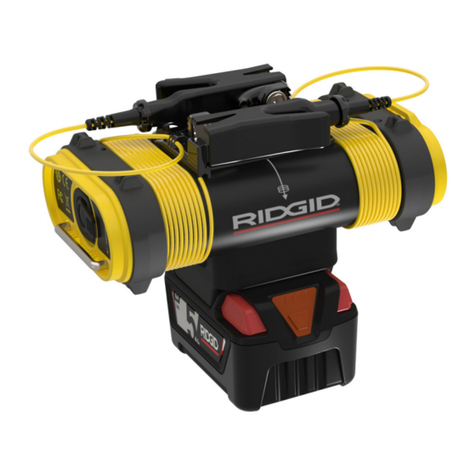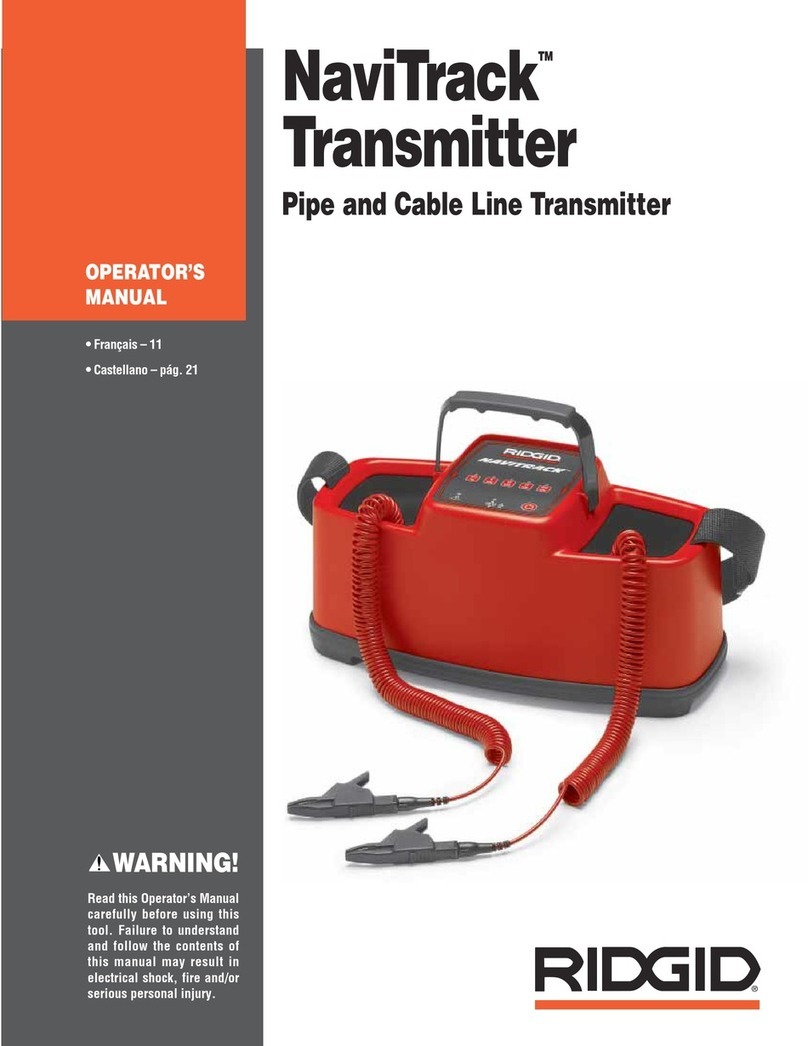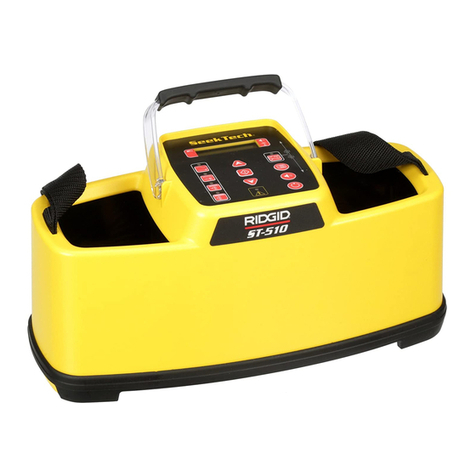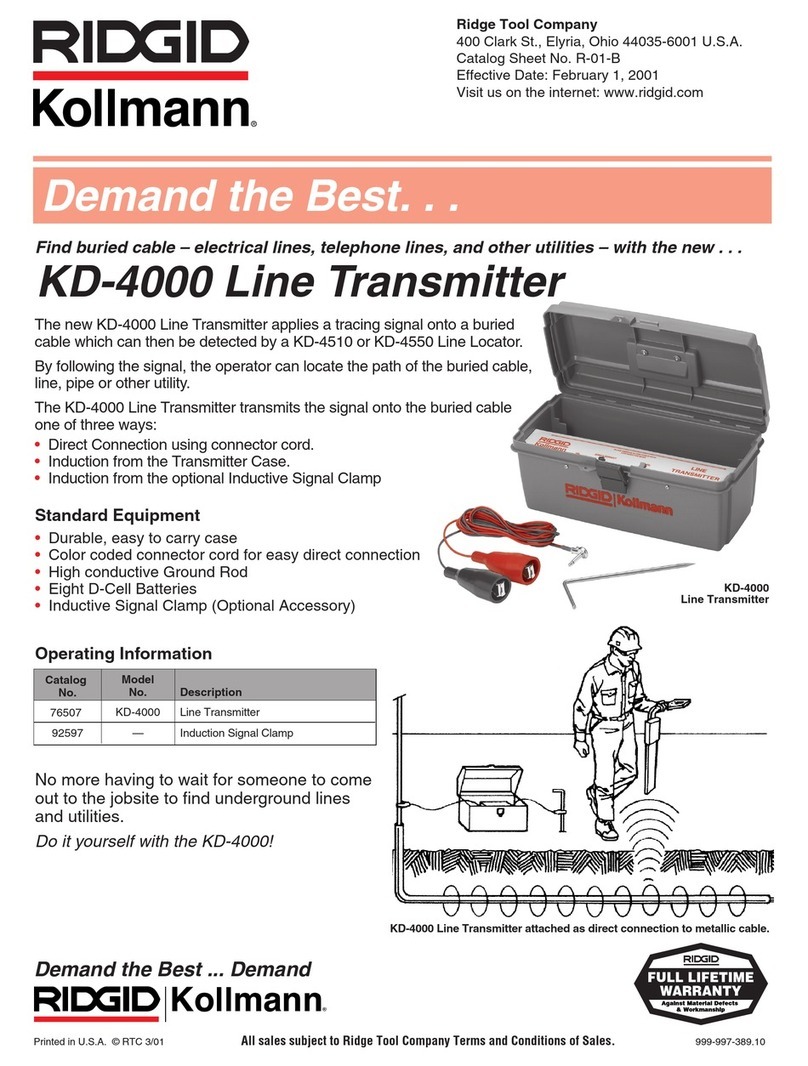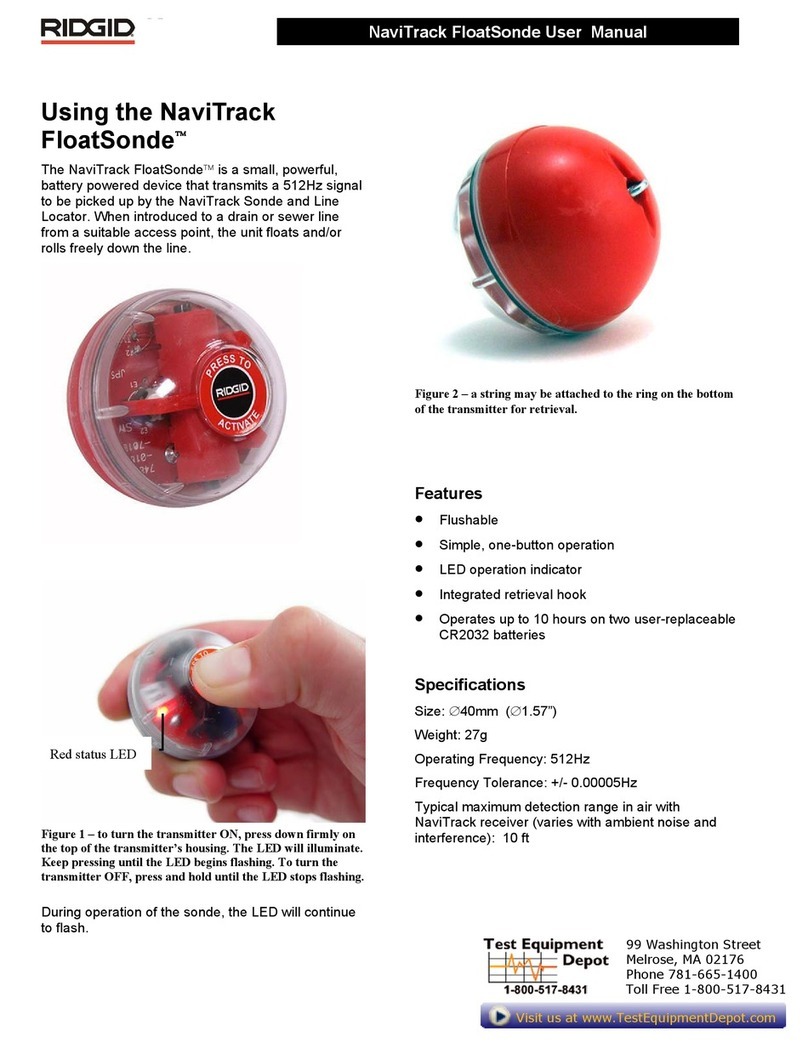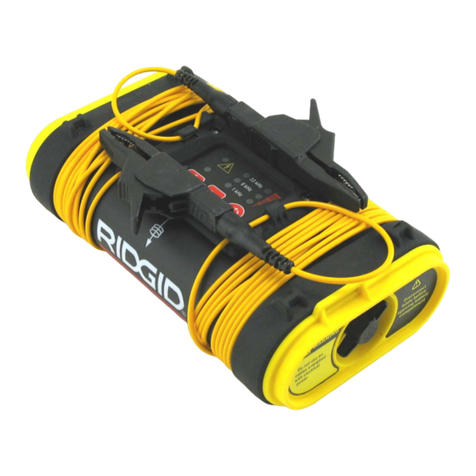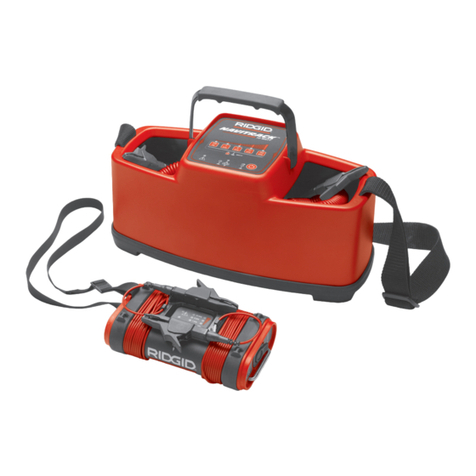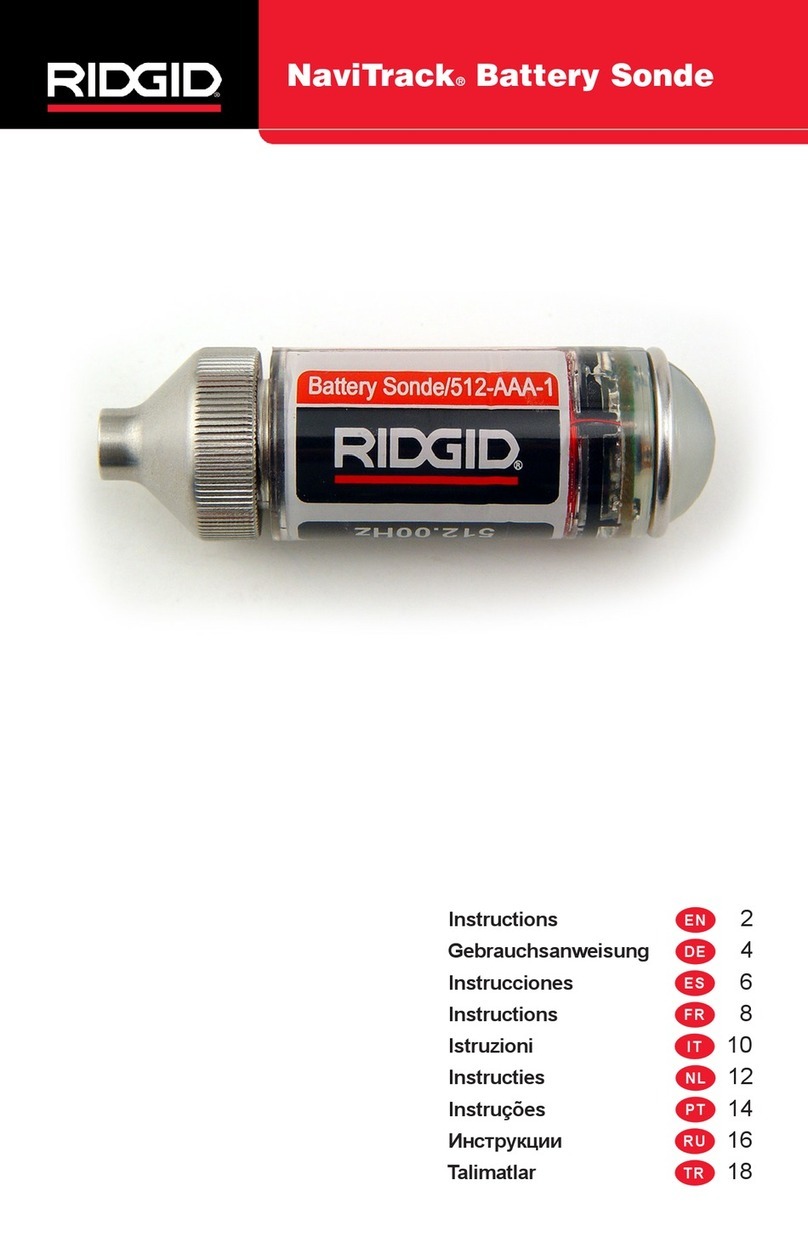NaviTrack™ Line Transmitter
Ridge Tool Company2
General Safety Information
WARNING! Read and understand all instructions. Failure
to follow all instructions listed below may
result in electric shock, fire, and/or serious
personal injury.
SAVE THESE INSTRUCTIONS!
Work Area Safety
•Keep your work area clean and well lit. Cluttered
benches and dark areas may cause accidents.
•Do not operate electrical devices or power tools in
explosive atmospheres, such as in the presence of
flammable liquids, gases, or heavy dust. Tools cre-
ate sparks which may ignite the dust or fumes.
•Keep bystanders, children, and visitors away
while operating tool. Distractions can cause you
to lose control.
Electrical Safety
•Do not attach the leads to a high voltage line.
•Do not operate the system with electrical compo-
nents removed. Exposure to internal parts increases
the risk of injury.
•Avoid exposure to rain or wet conditions. Keep
battery out of direct contact with water. Water entering
electrical devices increases the risk of electric shock.
•Prevent object and liquid entry. Never spill liquid
of any kind on the product. Liquid increases the risk of
electrical shock and damage to the product.
Battery Precautions
•Use only the size and type of battery specified.
Do not mix cell types (e.g. do not use alkaline with
rechargeable). Do not use partly discharged and fully
charged cells together (e.g. do not mix old and new).
•Recharge batteries with charging units specified by
the battery manufacturer. Using an improper charger
can overheat and rupture the battery.
•Properly dispose of the batteries. Exposure to high
temperatures can cause the battery to explode, so do
not dispose of in a fire. Some countries have regula-
tions concerning battery disposal. Please follow all
applicable regulations.
Personal Safety
•Avoid Traffic. Pay close attention to moving vehi-
cles when using on or near roadways. Wear visible
clothing or reflector vests. Such precautions may
prevent serious injury.
•Stay alert, watch what you are doing and use com-
mon sense. Do not use tool while tired or under the
influence of drugs, alcohol, or medications. A moment
of inattention while operating tools may result in serious
personal injury.
•Gloves should always be worn for health and safety
reasons. Sewer lines are unsanitary and may contain
harmful bacteria and viruses.
•Do not overreach. Keep proper footing and bal-
ance at all times. Proper footing and balance enables
better control of the tool in unexpected situations.
•Use safety equipment. Always wear eye protection.
Dust mask, non-skid safety shoes, hard hat, or hearing
protection must be used for appropriate conditions.
•Use proper accessories. Do not place this product on
any unstable cart or surface. The product may fall
causing serious injury to a child or adult or serious
damage to the product.
Service
•Tool service must be performed only by qualified
repair personnel. Service or maintenance performed
by unqualified repair personnel could result in injury.
•When servicing a tool, use only identical replace-
ment parts. Follow instructions in the Maintenance
Section of this manual. Use of unauthorized parts or fail-
ure to follow maintenance instructions may create a risk
of electrical shock or injury.
•Follow instructions for changing accessories.
Accidents are caused by poorly maintained tools.
•Provide proper cleaning. Remove battery before
cleaning. Do not use liquid cleaners or aerosol cleaners.
Use a damp cloth for cleaning.
•Conduct a safety check. Upon completion of any
service or repair of this product, ask the service tech-
nician to perform safety checks to determine that the
product is in proper operating condition.
•Damage to the product that requires service.
Remove the batteries and refer servicing to qualified ser-
vice personnel under any of the following conditions:
• If liquid has been spilled or objects have fallen into
product;
• If product does not operate normally by following the
operating instructions;
• If the product has been dropped or damaged in any
way;
• When the product exhibits a distinct change in per-
formance.
